The Colosseum is a massive ancient Roman amphitheater that is famous for showcasing large-scale entertainment events like gladiator battles, hunts pitting humans against wild animals and executions of prisoners of war and criminals.
The construction of the Colosseum began in 72AD under Emperor Vespasian but he died before it was complete. His two sons, Emperors Titus and Domitian completed it in 80AD. It is located next to the Roman Forum and the Arch of Constantine in the center of Rome, Italy.
The Colosseum is the largest ancient amphitheater ever built and it is still the largest standing amphitheater in the world. It is generally smaller than most modern large stadiums but it is still considered a large stadium by today’s standards despite being almost 2000 years old.
The most common and most well-known events held in the Colosseum were gladiator battles however it also held hunts and executions. In addition to hunts, animals were used as executioners of people condemned to die in the arena. Some of the animals that were seen in the Colosseum were lions, tigers, wolves, bears, leopards, wild boar, elephants, hyena, buffalo, hippopotamus, crocodile and giraffe.
The last records of gladiator battles in the Colosseum date from the year 435AD but it was still used for hunts for another century. It is uncertain to know how many people died in the Colosseum but it is believed to be as many as 400,000 people including gladiators, slaves, convicts and prisoners.
Iconic architectural design
The Colosseum is considered one of the most iconic landmarks of ancient Rome and is renowned for its architectural design. A large portion of the upper half of the stadium has been destroyed over time which is easily seen in the next photo. In the second photo, I took the photo from another position to try and show how it would look if the upper portion was still intact (a little imagination helps to visualize the complete upper half).
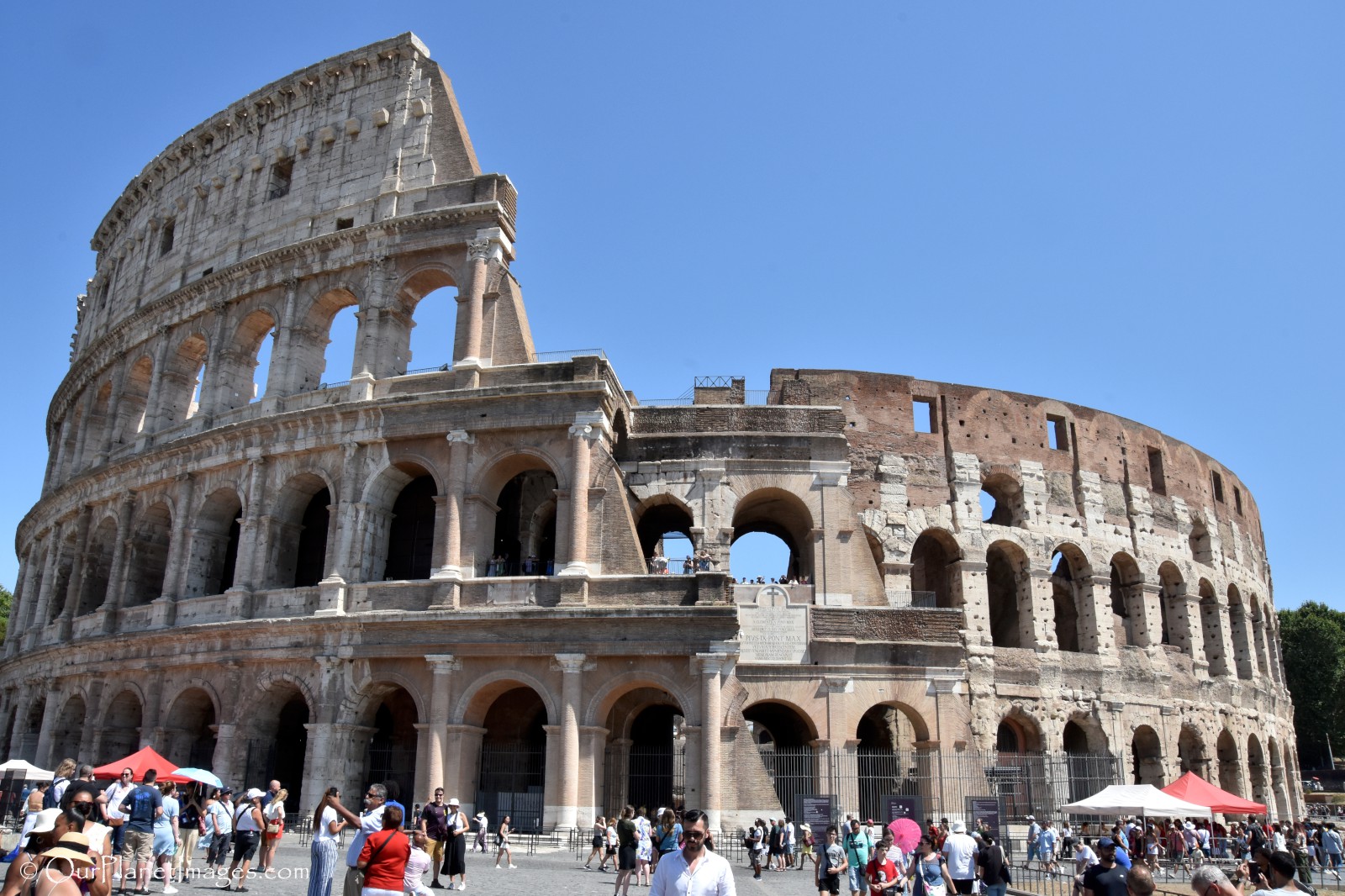
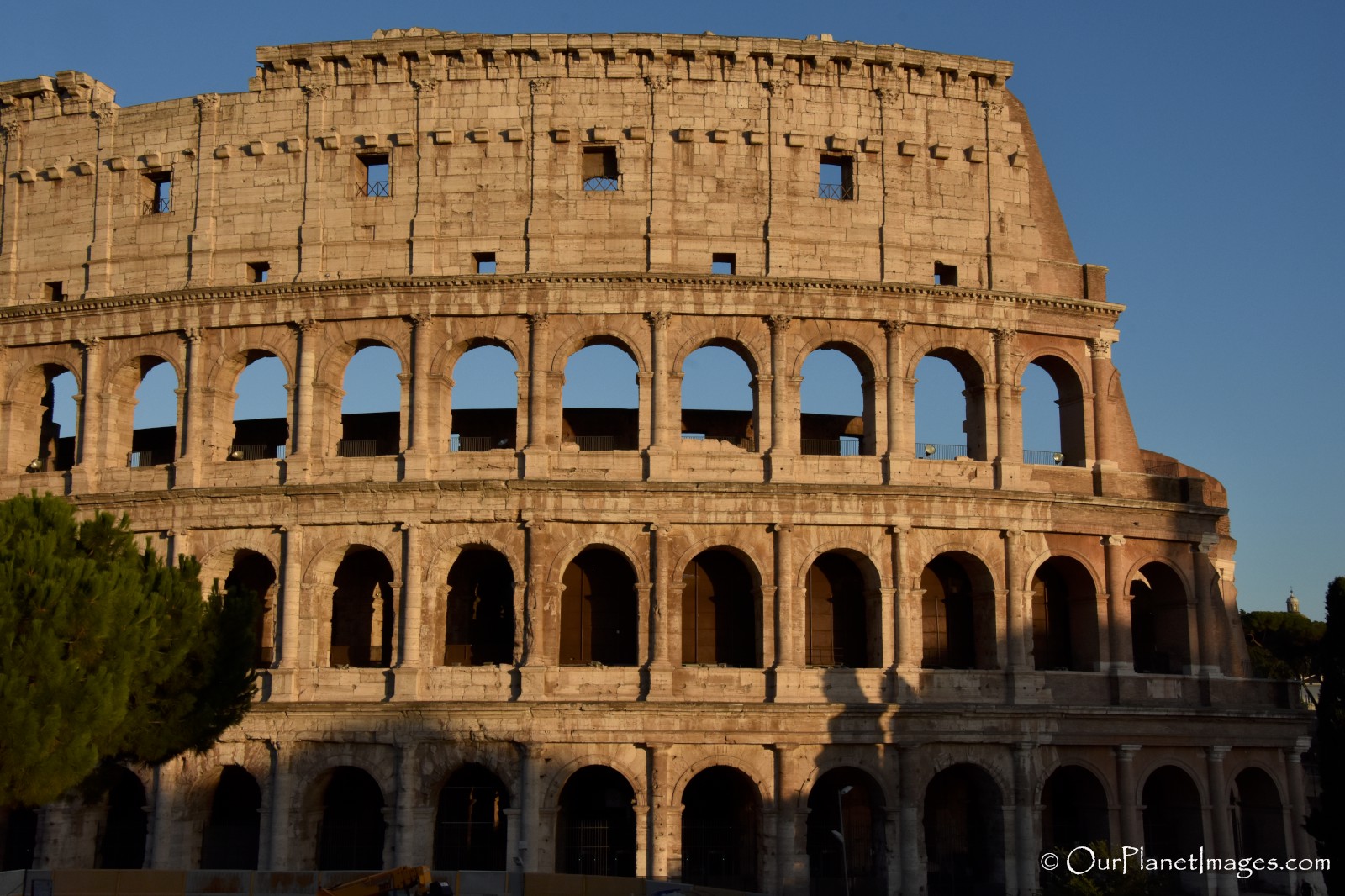
The upper half that is remaining has been stabilized with modern construction and the lower portion that is remaining is the interior of the stadium. The interior portion of the stadium that is exposed shows the construction hole in the columns and the original outer façade looks the way it originally appeared.
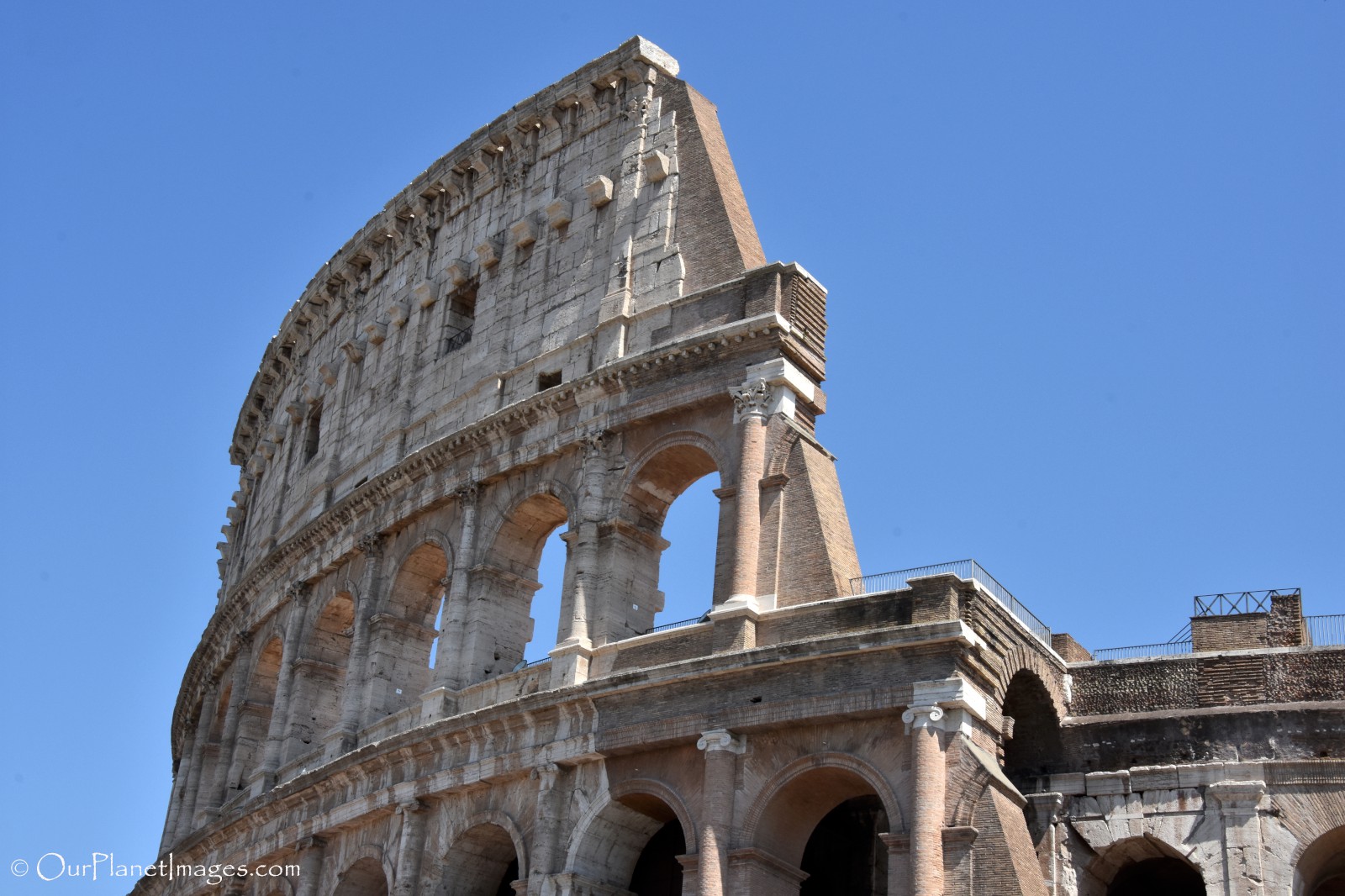
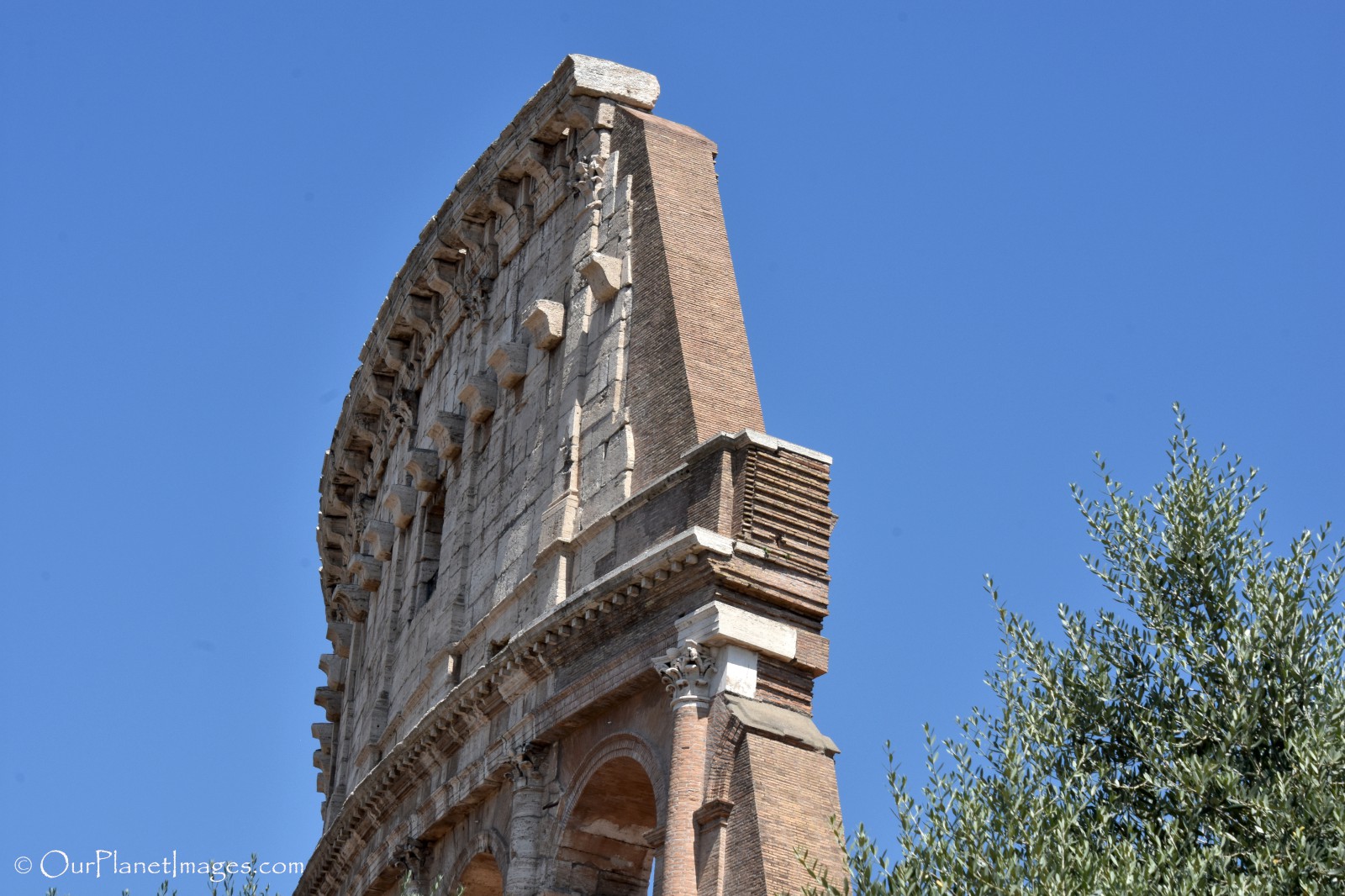

Arches define the architecture
The Colosseum’s outer walls consists of three levels of Corinthian columns with arched openings between the columns. Each level has 80 arches making a total of 240 arches that dominate the appearance of the Colosseum. It is the arches that are the defining feature of the Colosseum and are what make the Colosseum’s architecture an iconic building.
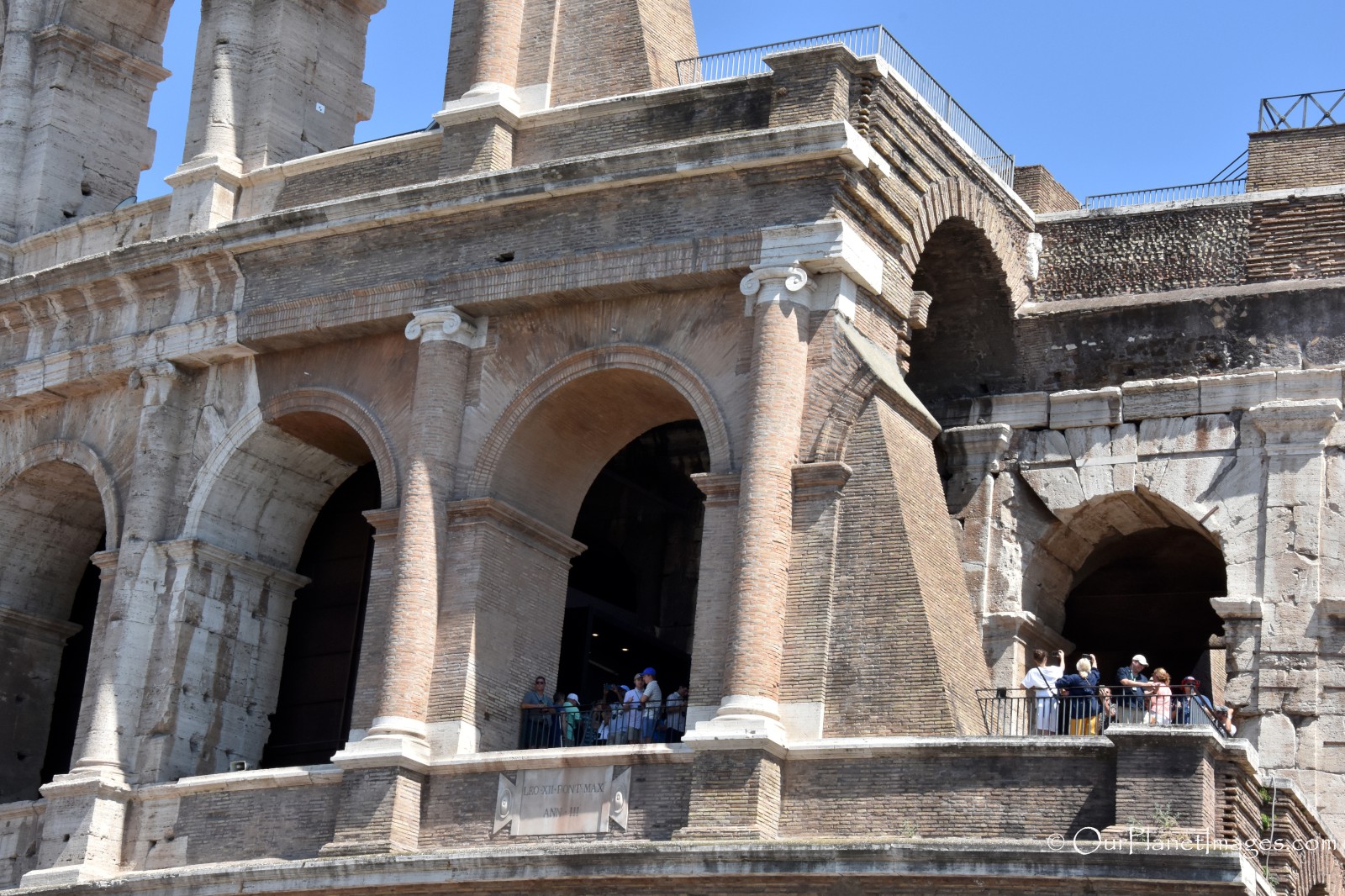
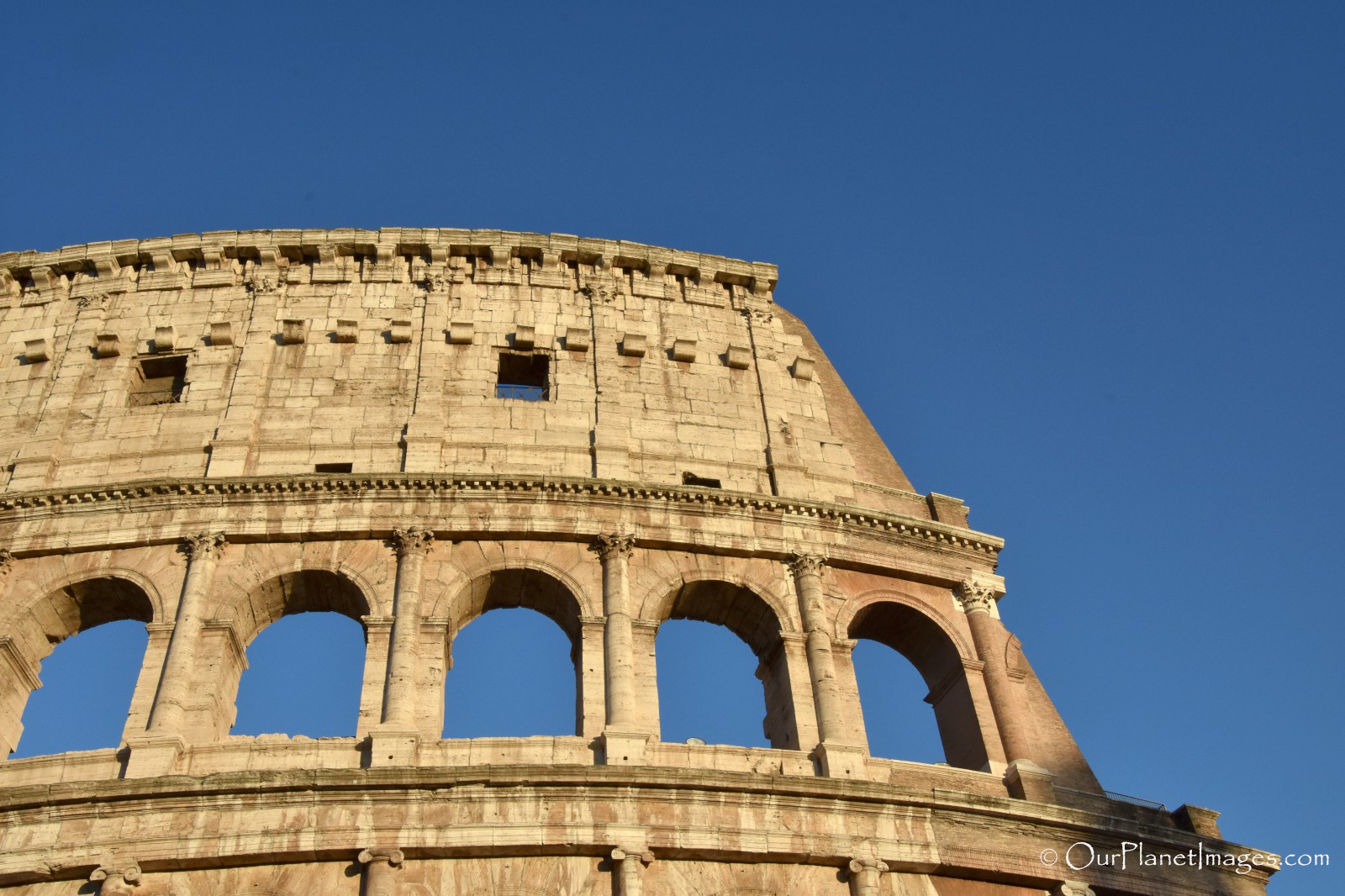

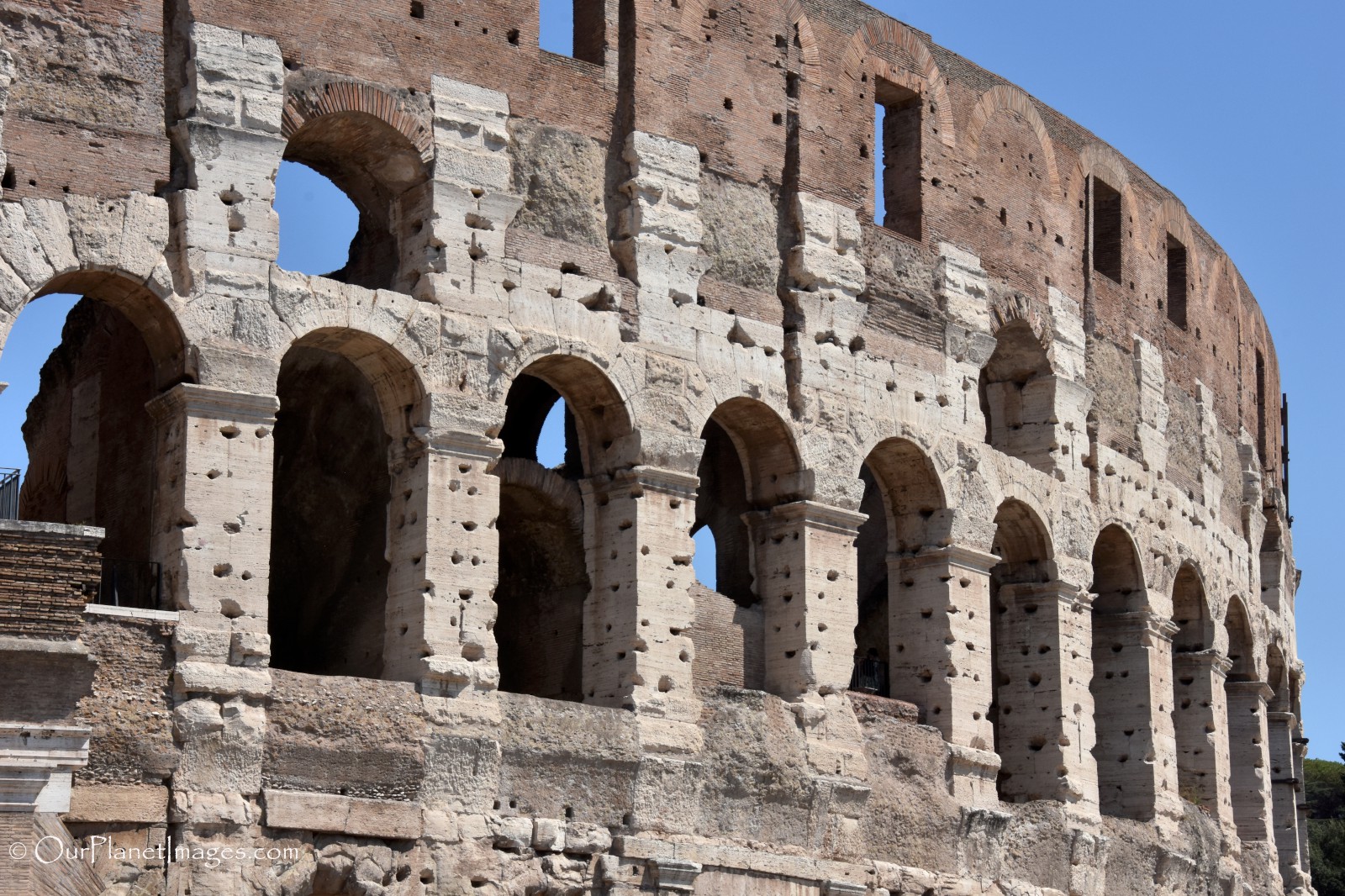

The inner corridor
Typical to even modern stadiums, the Colosseum has a corridor that allowed people to walk around the stadium without entering the spectator seating area. The first two photos below were taken inside the corridor, the third is of the corridor ceiling and the forth is looking from the corridor into the stadium.

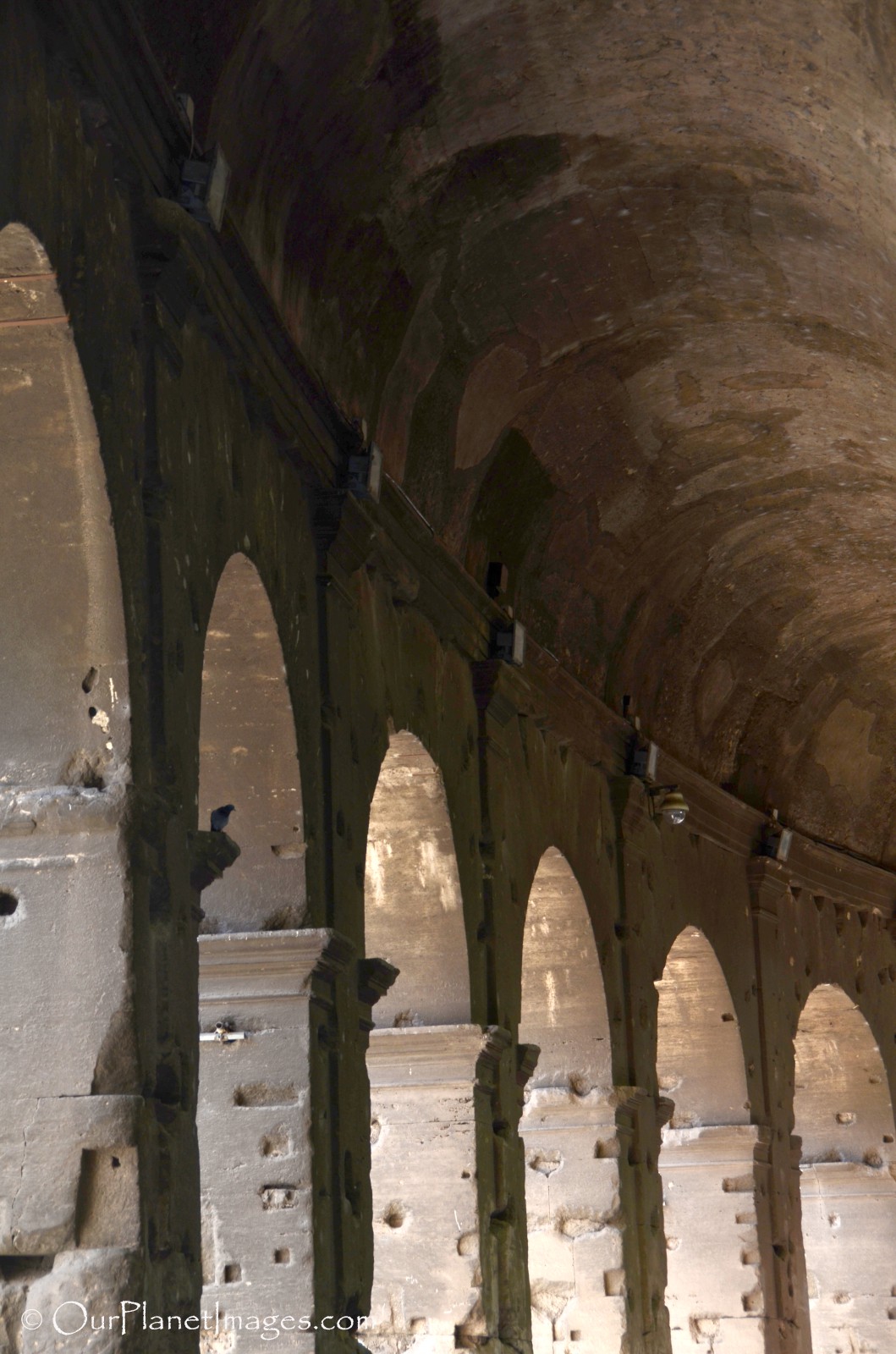
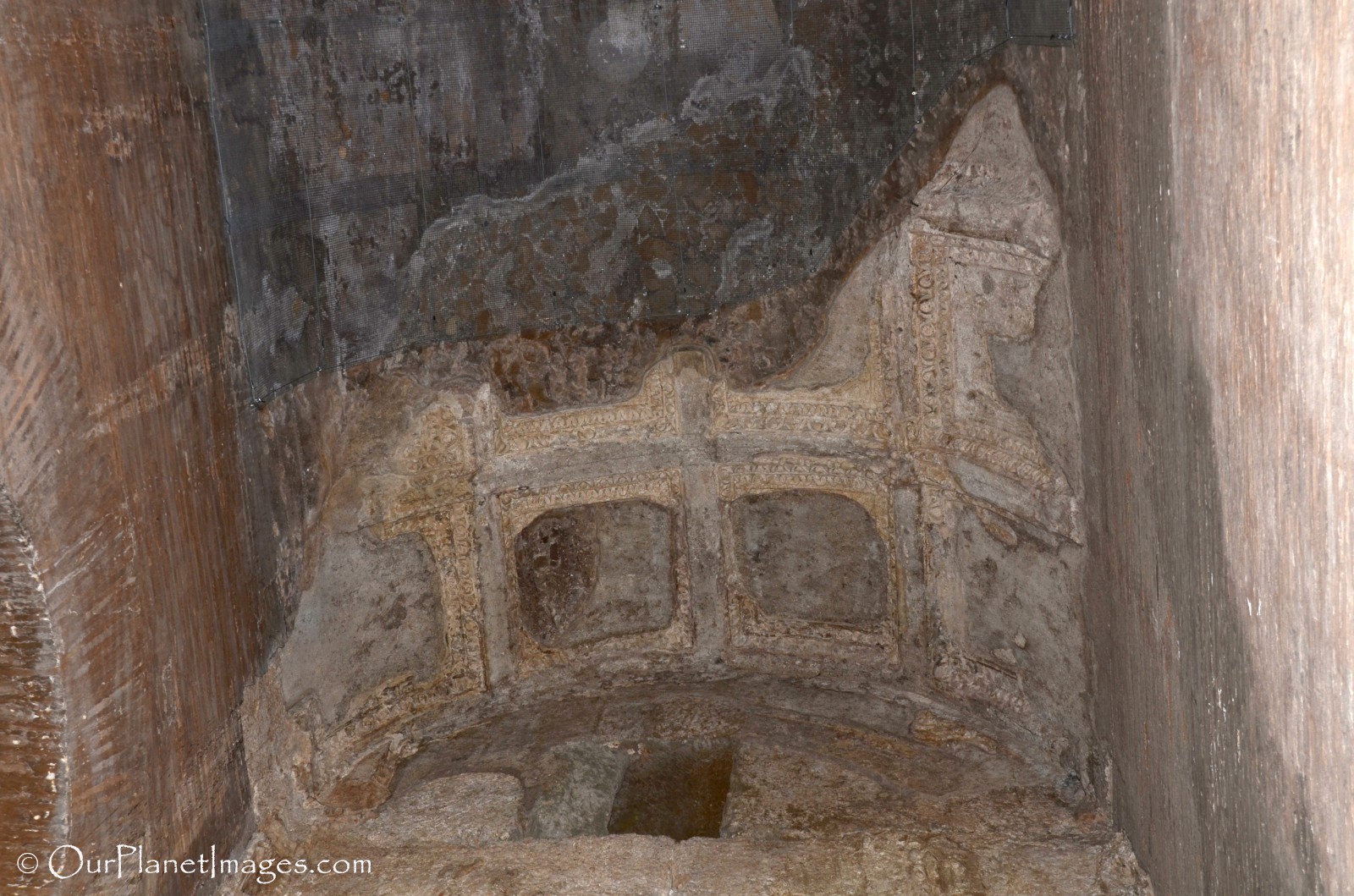
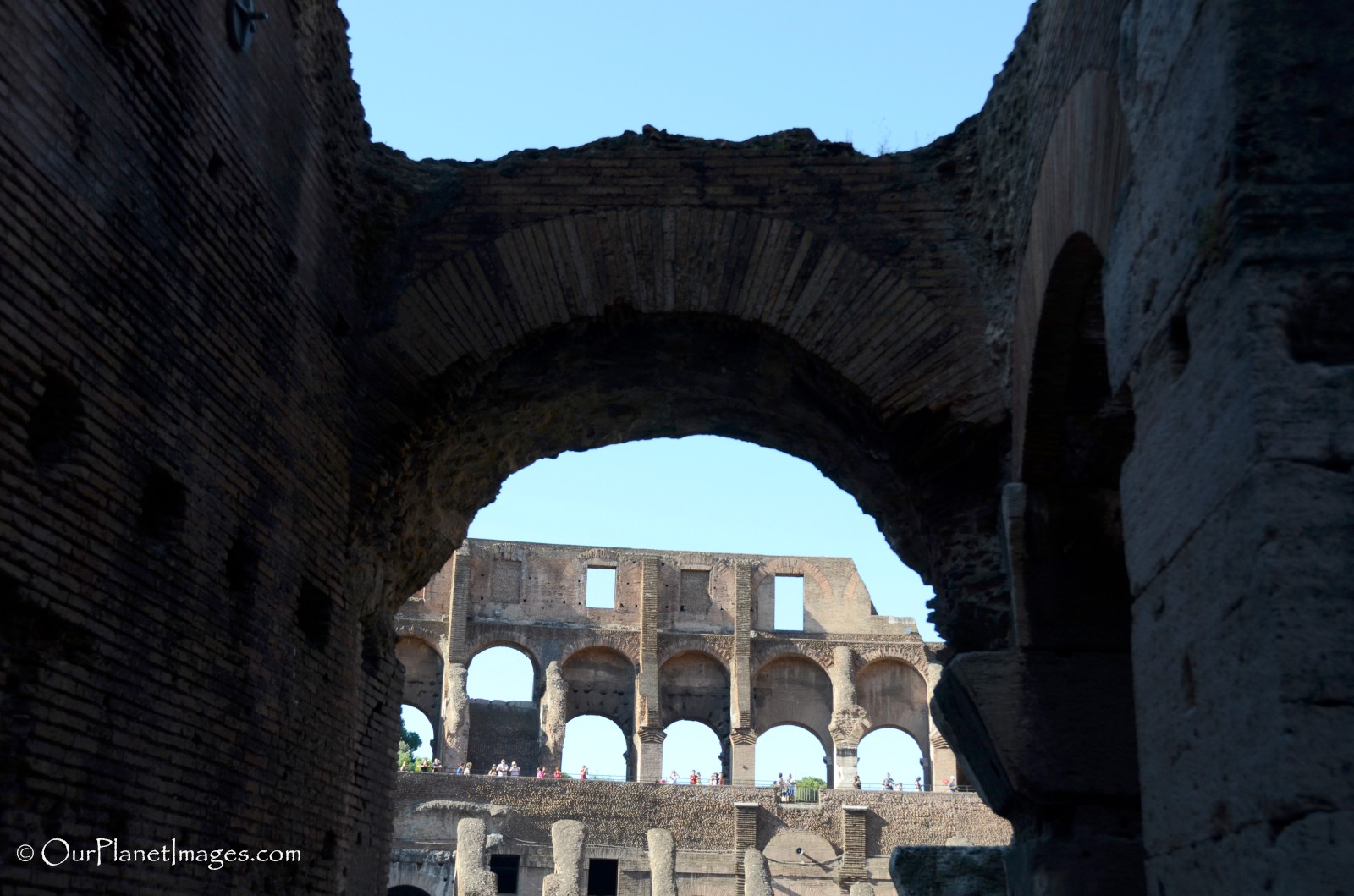
The stadium and entertainment surface
Similar to the outside of the stadium, the interior of the Colosseum has suffered significant damage over the past 2000 years but there is enough remaining to visualize how the stadium must have looked when it was built.
The Colosseum is an oval shape that is 189 meters (620 ft.) long, 156 meters (512 ft.) wide, 48.5 meters tall (159 ft.) tall and covers an area of 6 acres. It had the capacity to seat between 50,000 and 80,000 spectators for the events.
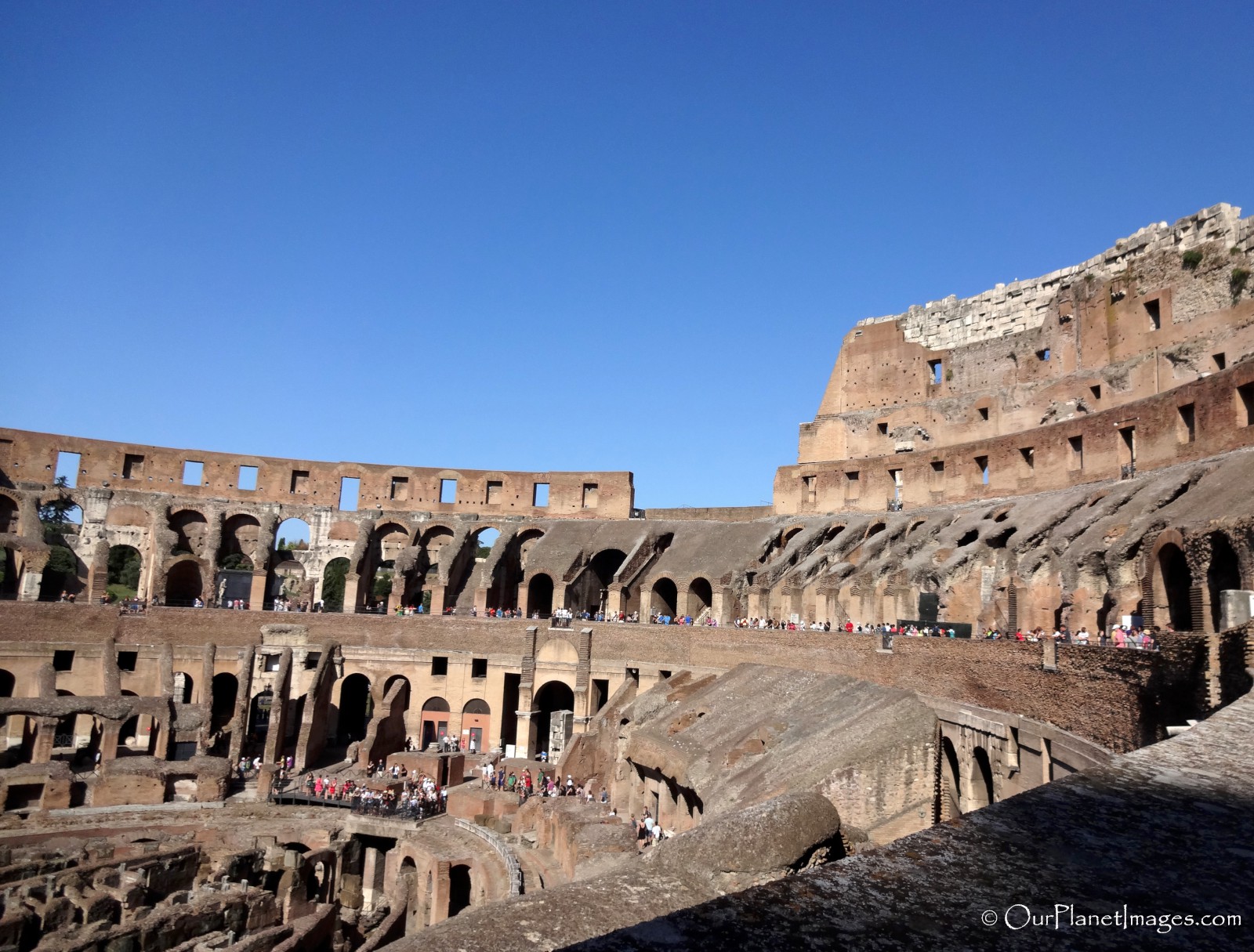
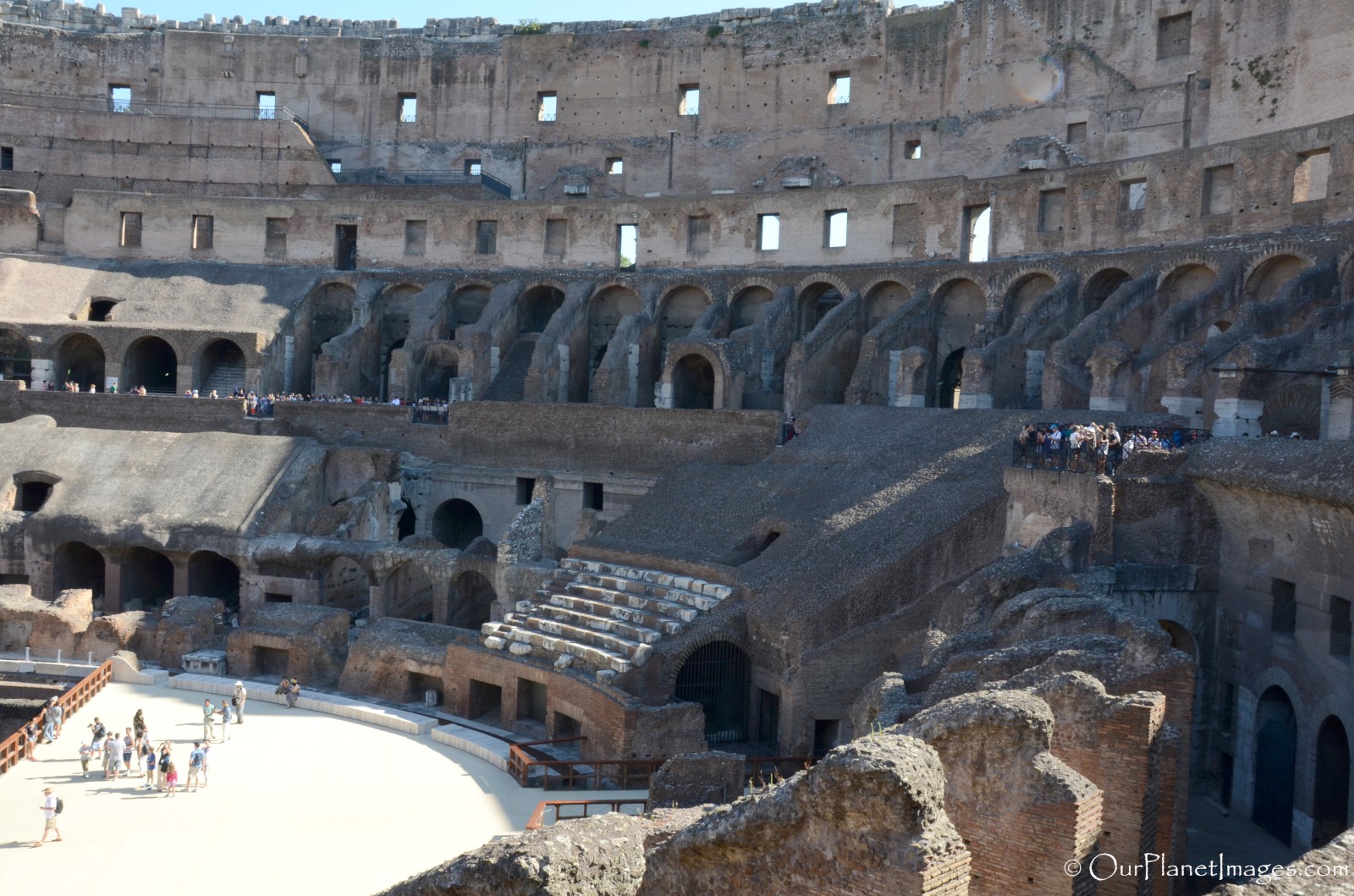
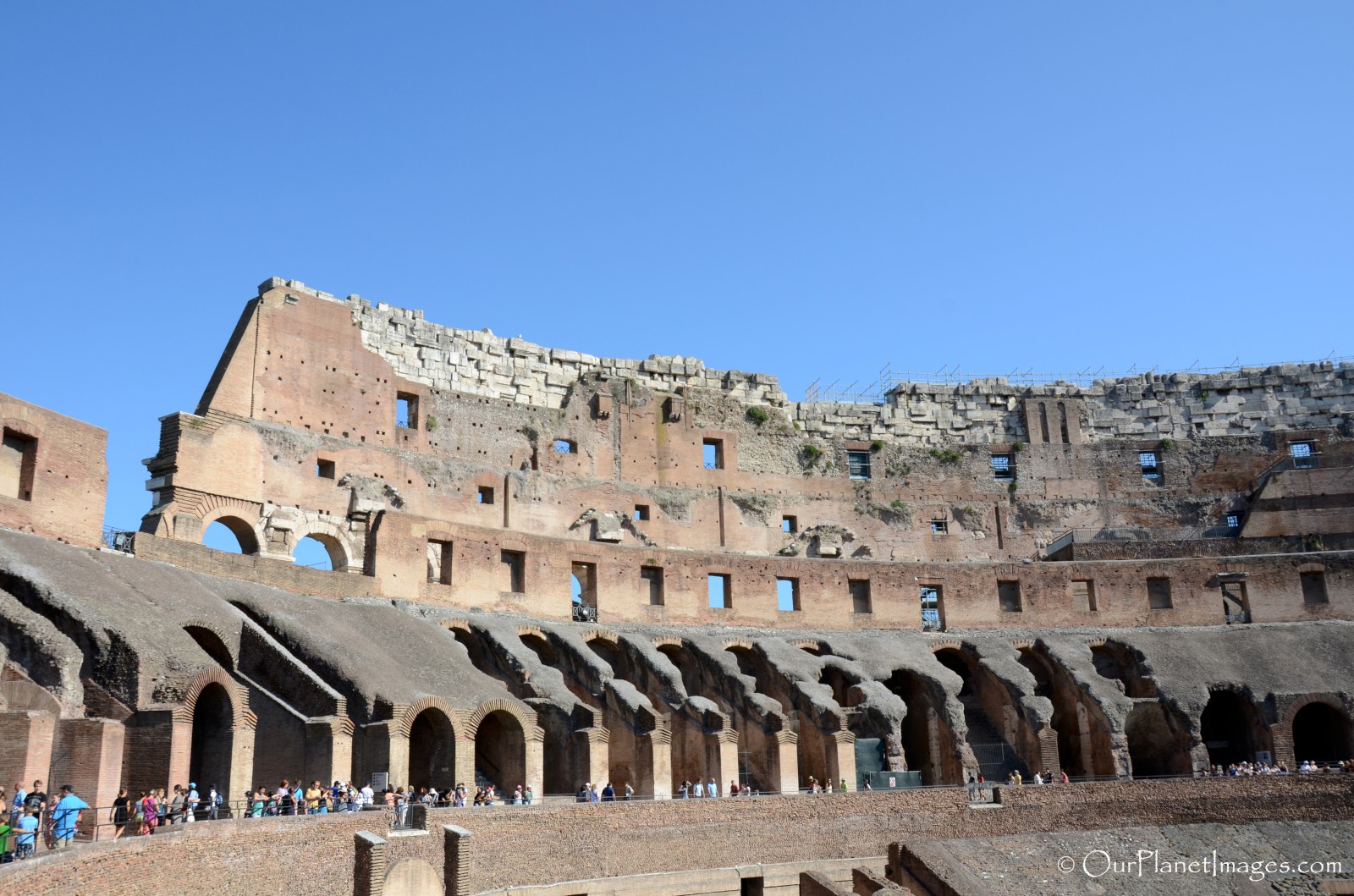
A small portion of the event surface has been rebuilt to show how the events arena looked inside the stadium.
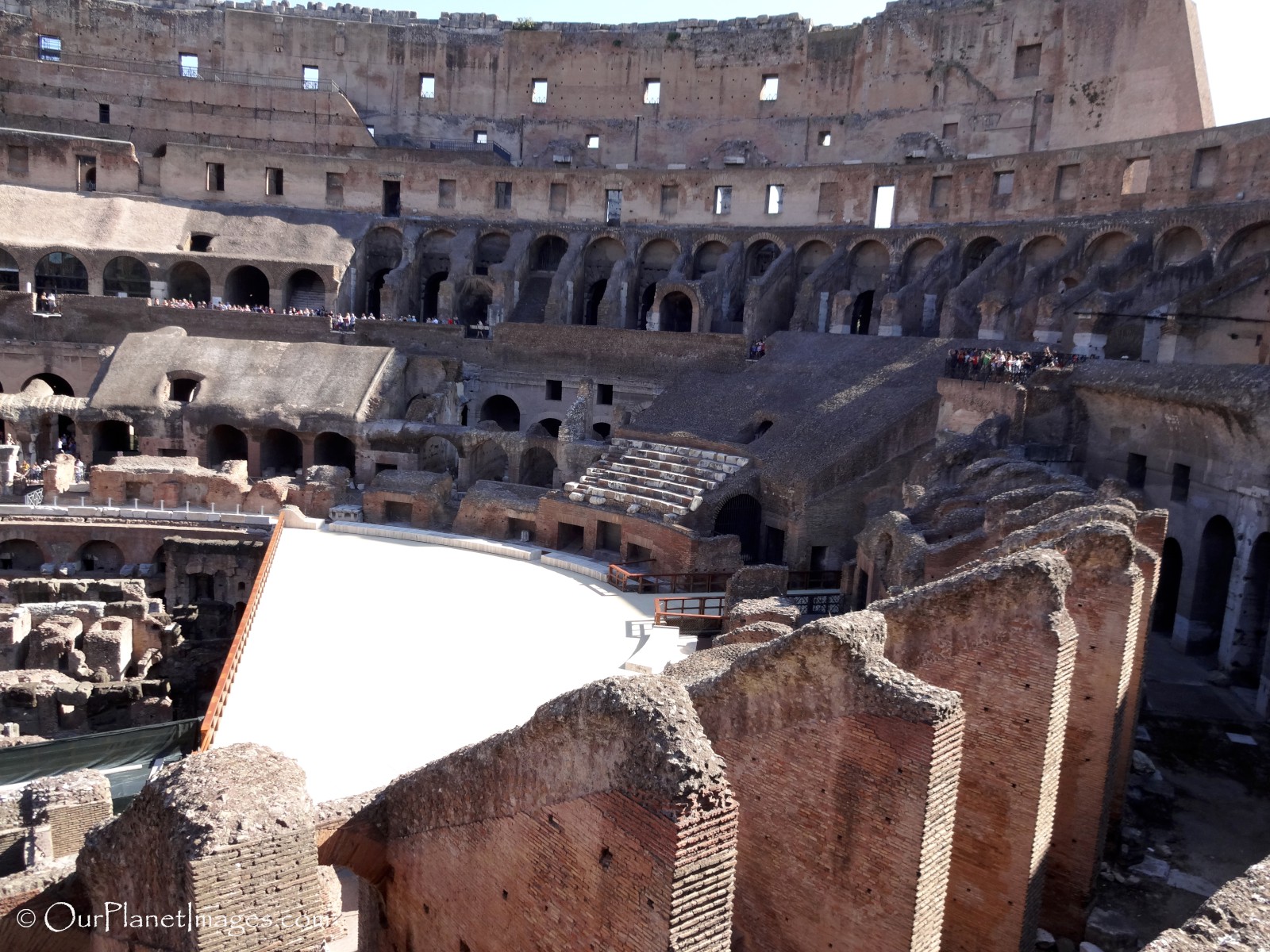
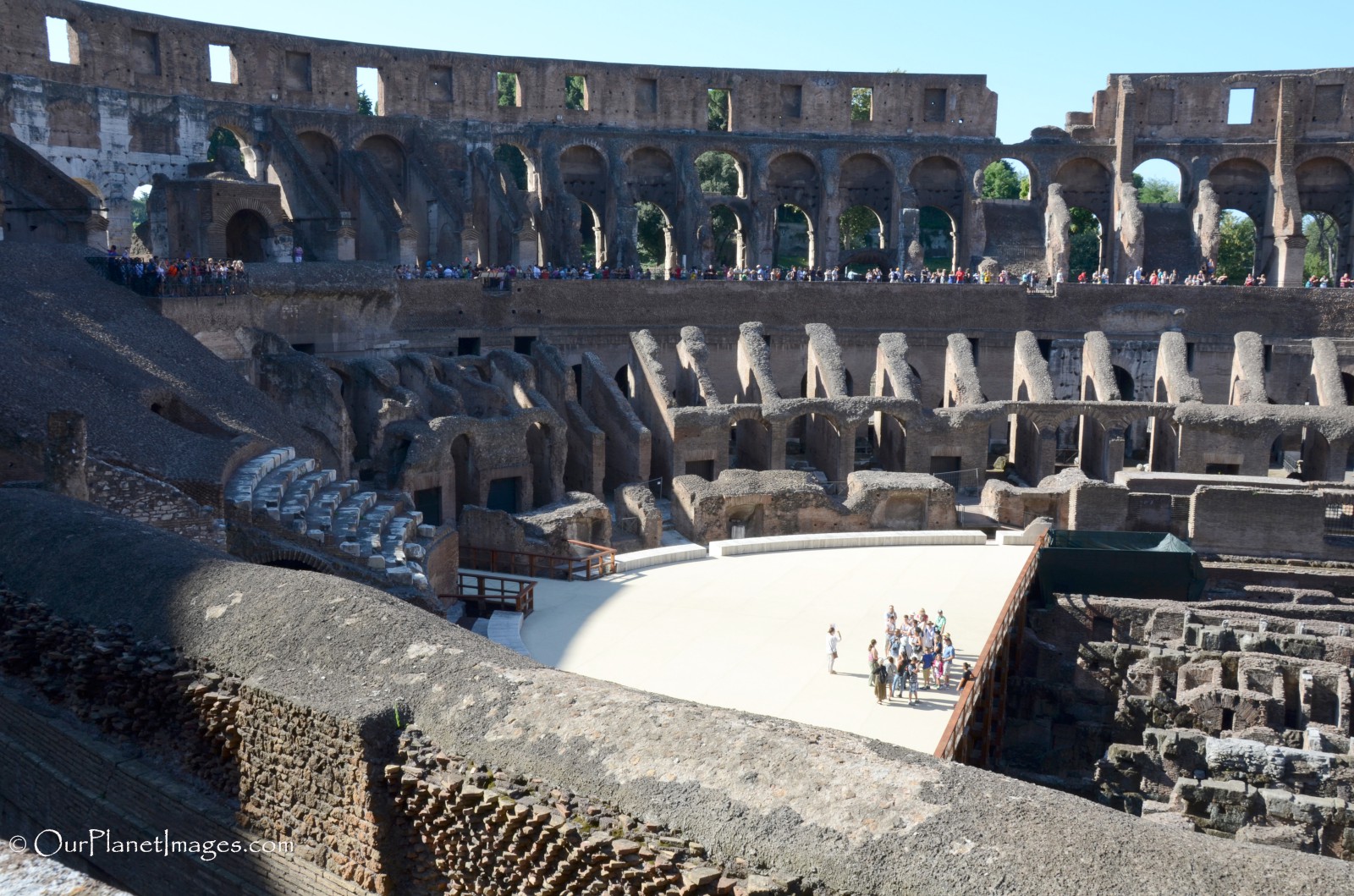
The Colosseum’s Hypogeum (underground)
Below the event surface was the Colosseum’s Hypogeum which translates to underground. The hypogeum was an elaborate network of tunnels and chambers where gladiators, animals and prisoners were kept before entering the arena. There were 80 vertical shafts to access the arena from the hypogeum along with a network of trap doors through which elements of the event could enter the arena during the contests.
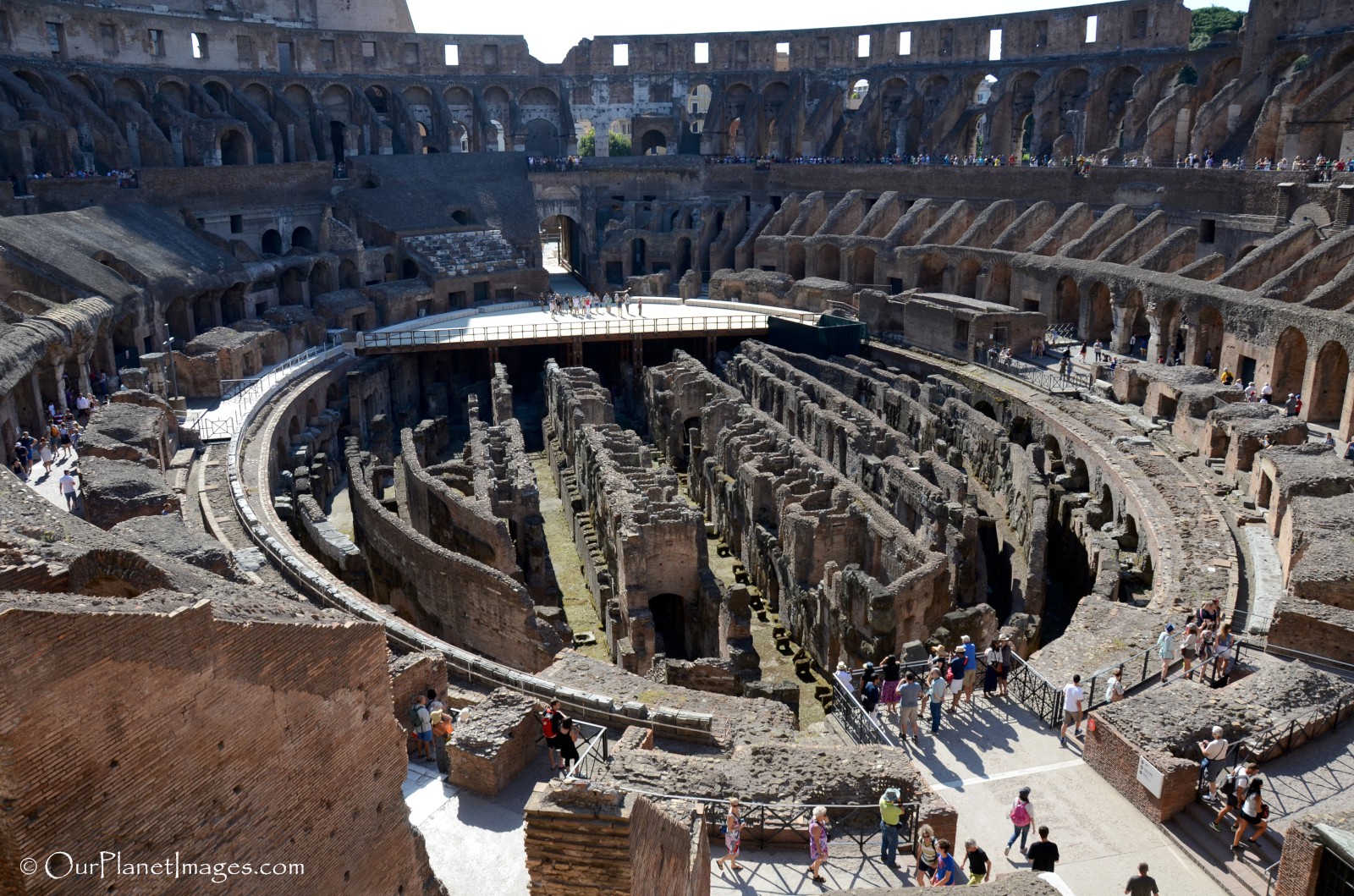
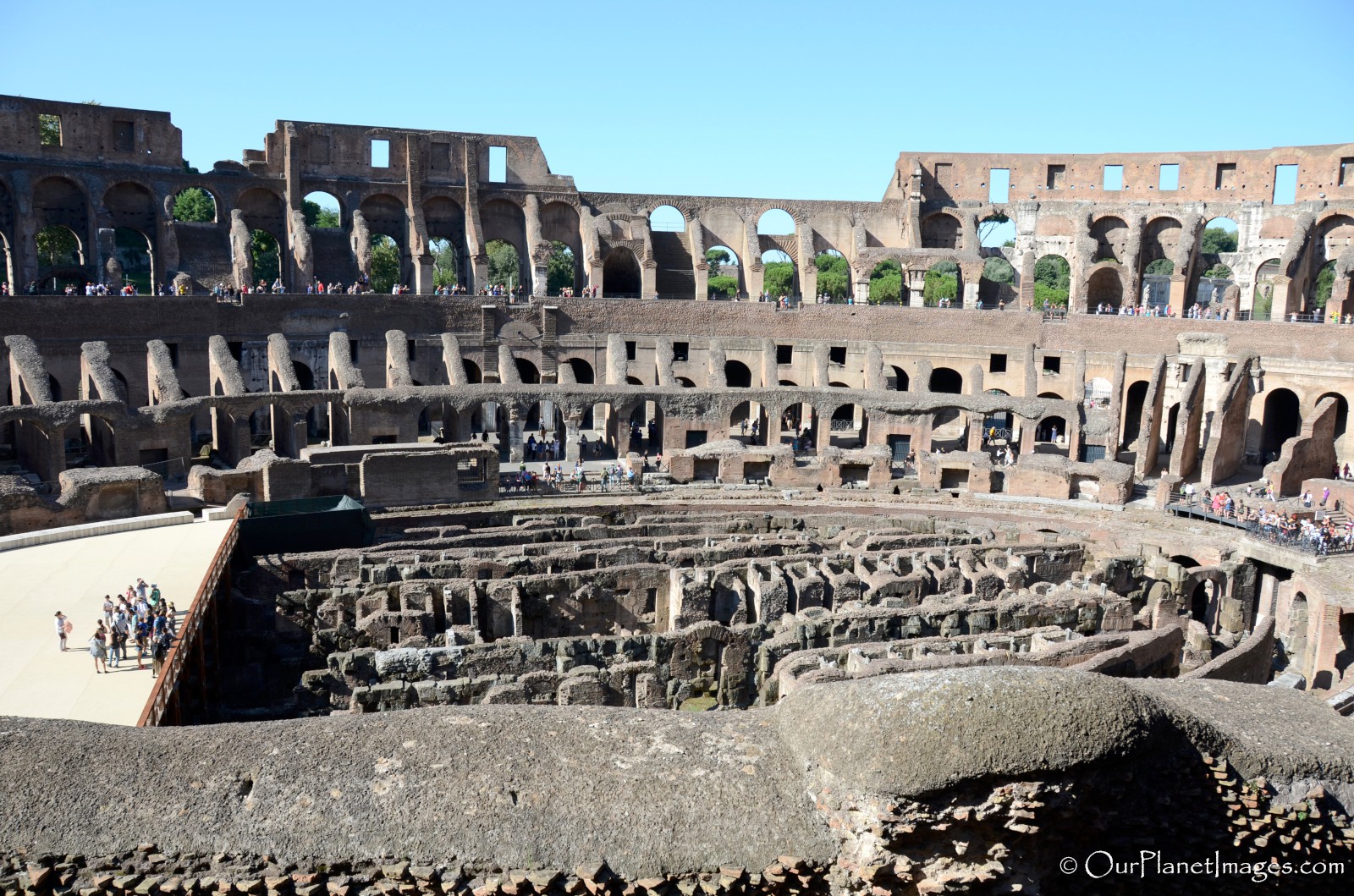
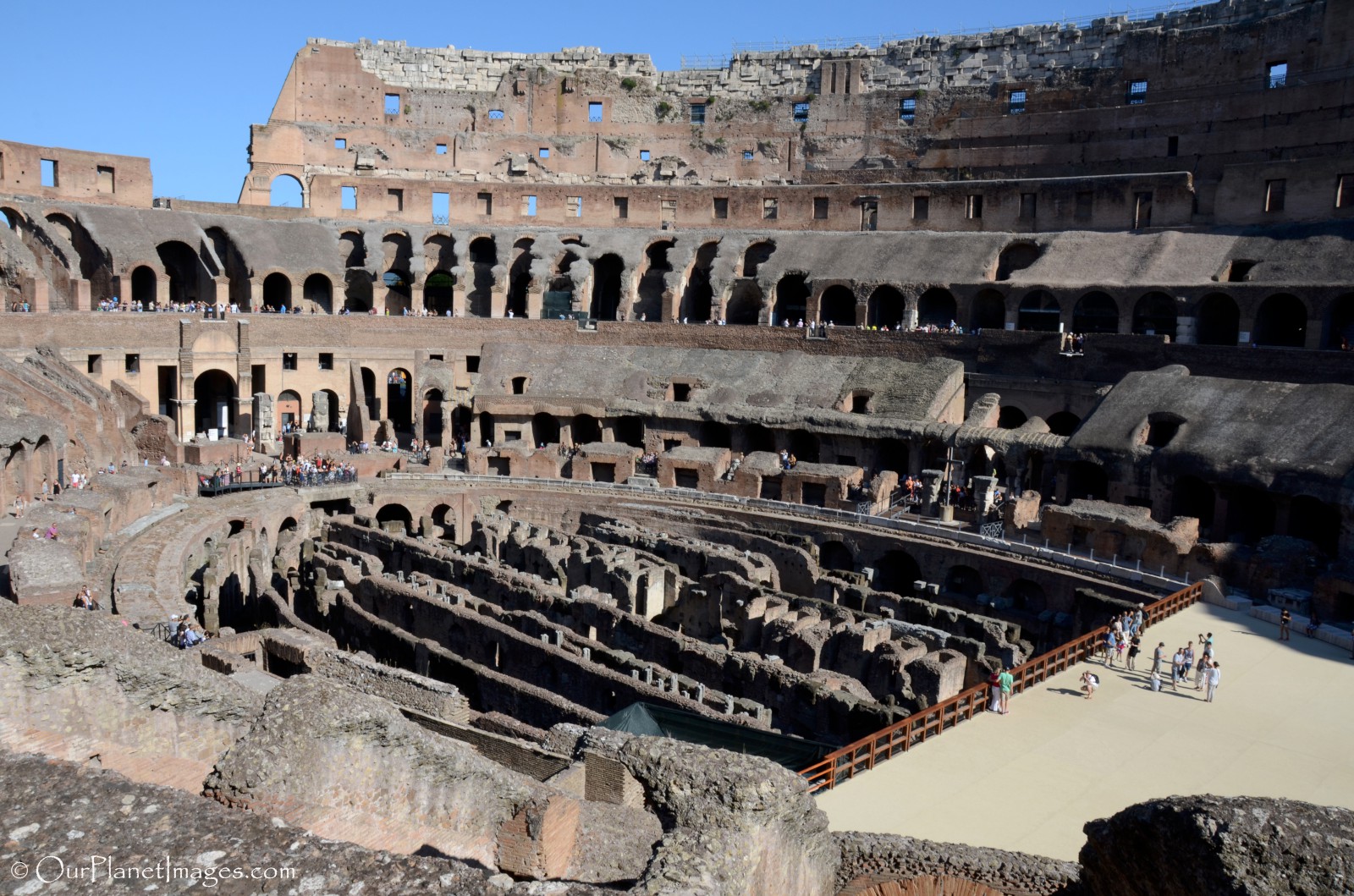
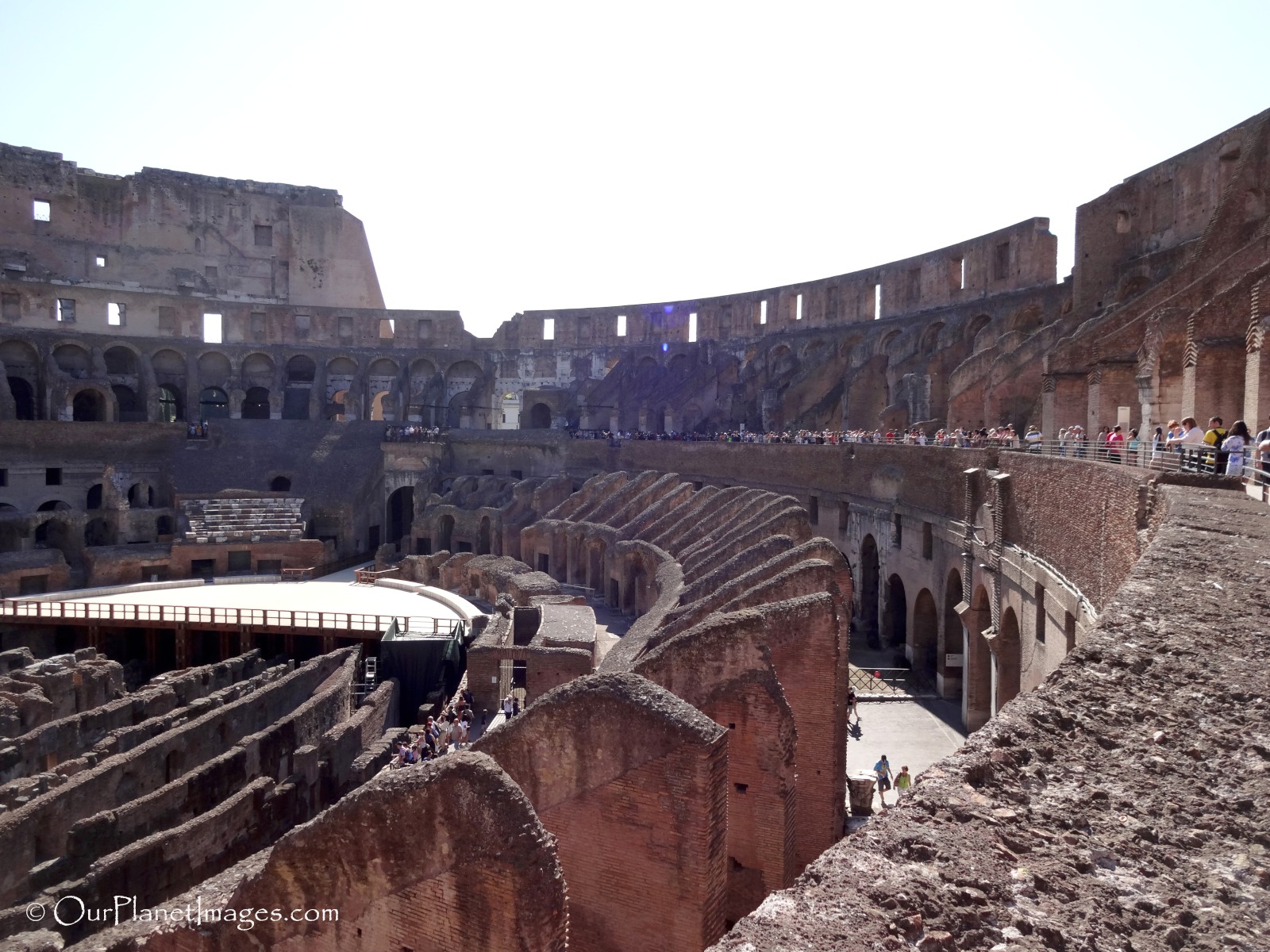
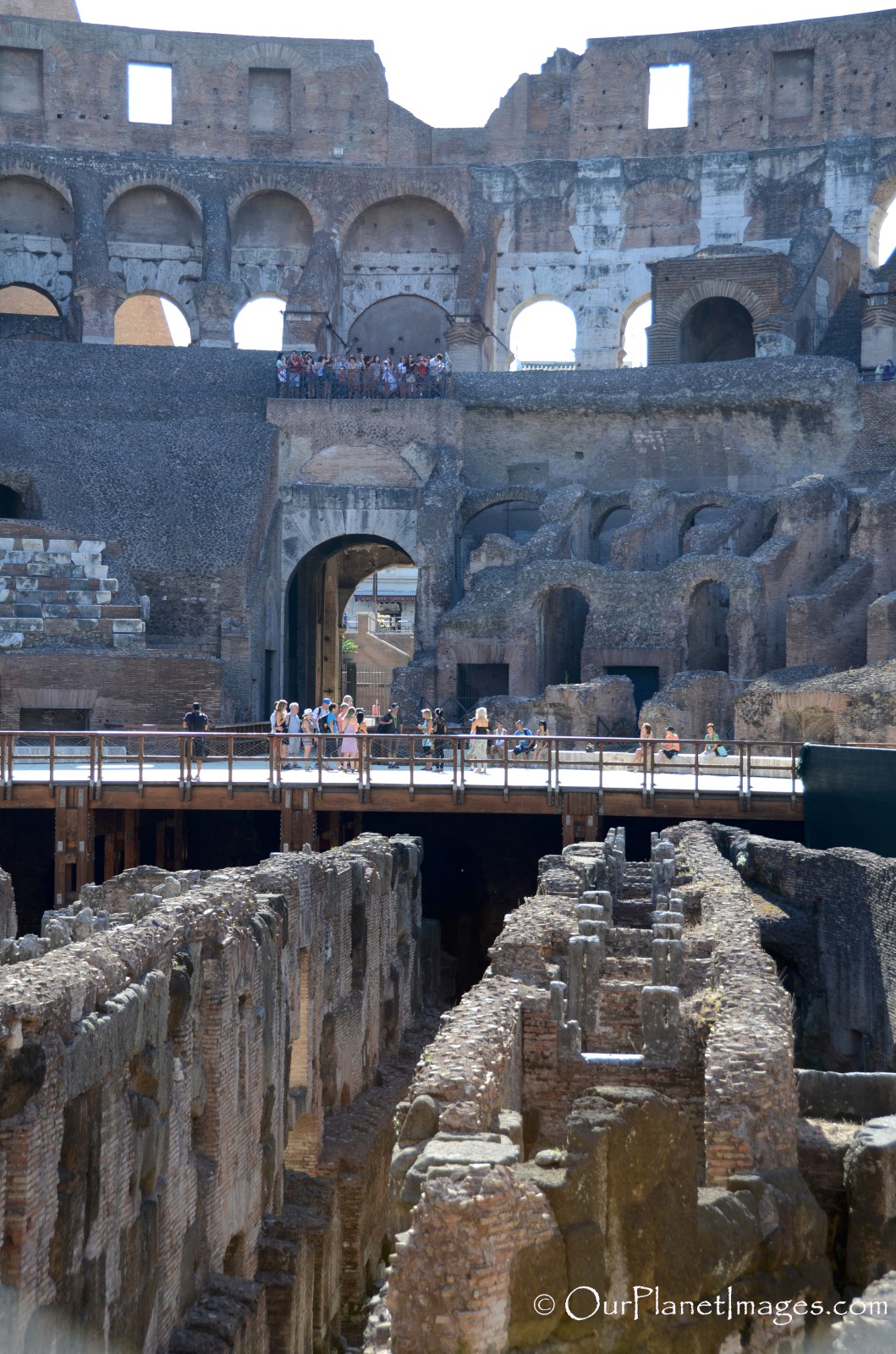
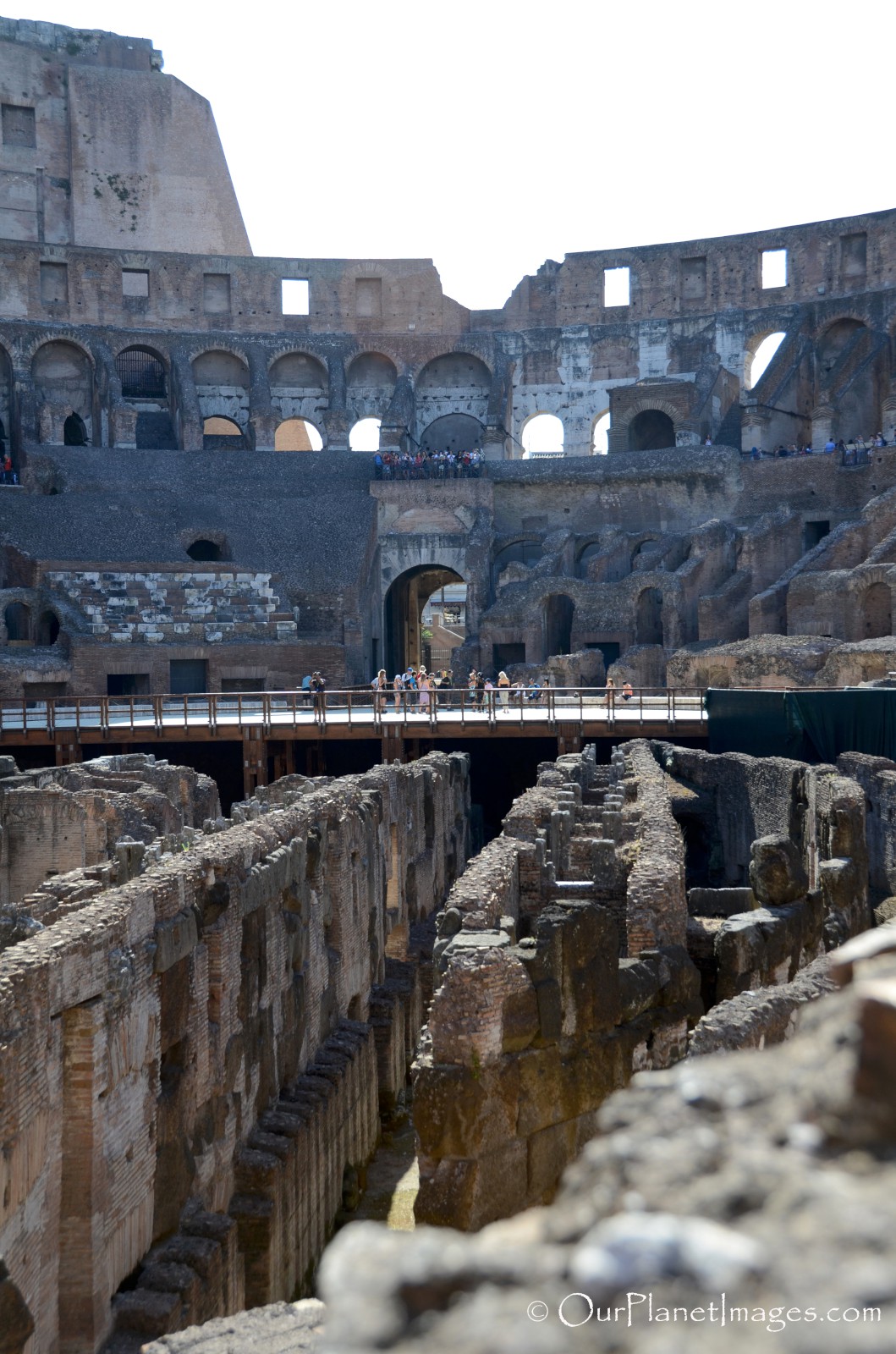
The Dust on My Shoes
Rome is filled with top rated tourist sites including many famous remains of the Roman Empire. With everything there is to see in Rome, the Colosseum was probably one of my most highly anticipated places to see.
My excitement came from knowing the history of the stadium. I think there is a bit romance associated with the events that took place in the stadium. However, once I entered the spectator’s seating area and saw the arena, my mood turned solemn. Knowing the history of the events that took place in the stadium didn’t affect me but standing inside and looking down to where the events happened and seeing where thousands of people filled the stadium to yell and cheer at the events actually did affect me, my impression of the Colosseum changed. Previously I thought of the Colosseum as a tourist site but now I feel that it is more like a memorial.
Not everything that I have seen in my travels has left me feeling exciting about having seen it but I have always came away with a better understanding of the events and history of the places that I visit. Experiencing places is always a good thing because we learn from those experiences.
All of the ancient sites that I have visited have had significant structural damage and that should be expected for sites that are still remaining after hundreds or even thousands of years old. The Colosseum is no exception, significant portions of the exterior are missing, only a few seating areas remain and only a small portion of the event arena has been rebuilt but enough remains to visualize the events and activities that occurred in the Colosseum.
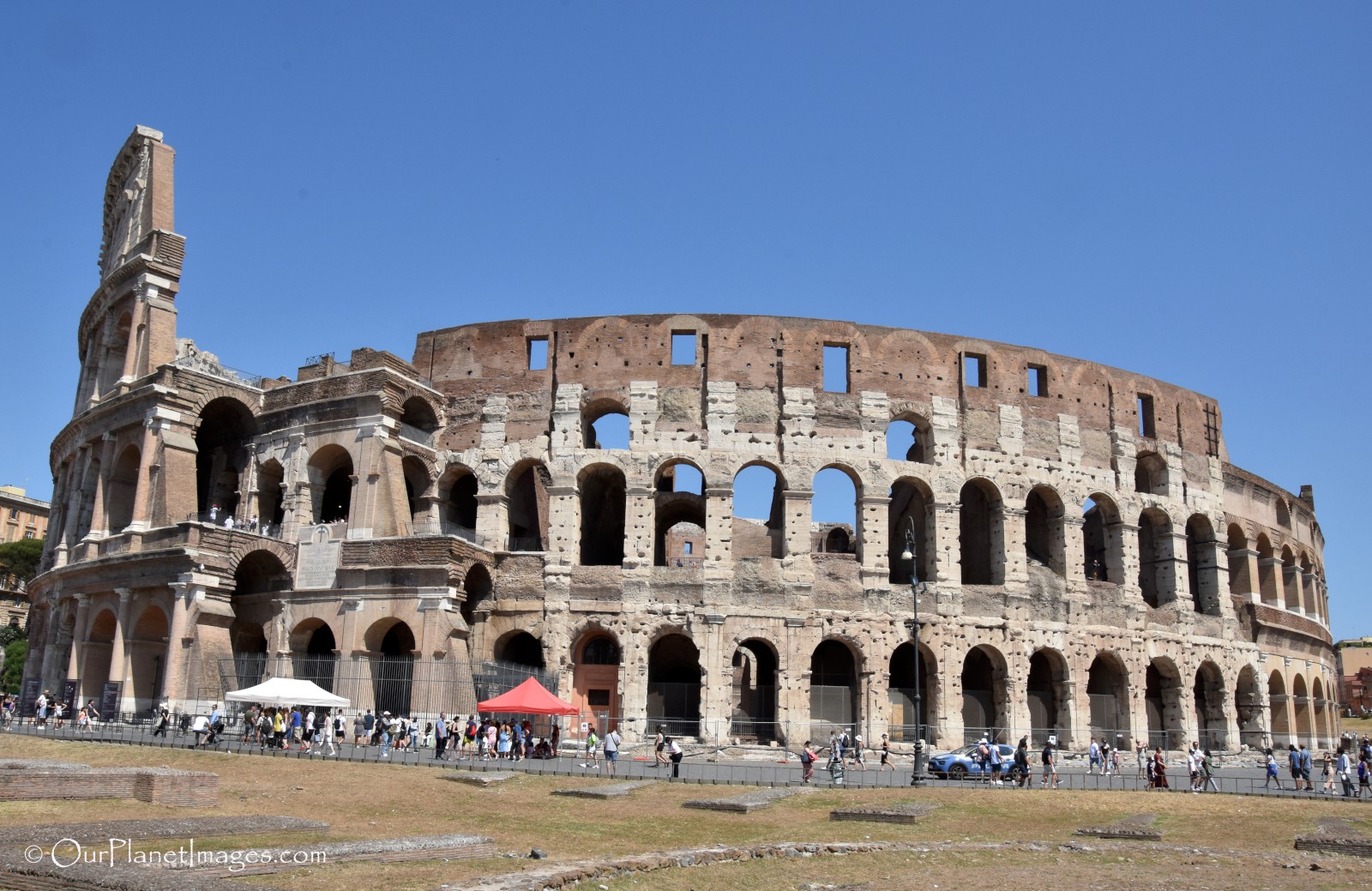
Travel has allow me to see many famous places, beautiful nature, learn about history, see places that gave me a glimpse into the future and travel has changed me in many ways.
Travel is exciting and fun but don’t be surprised if you return home a little different than when you left.
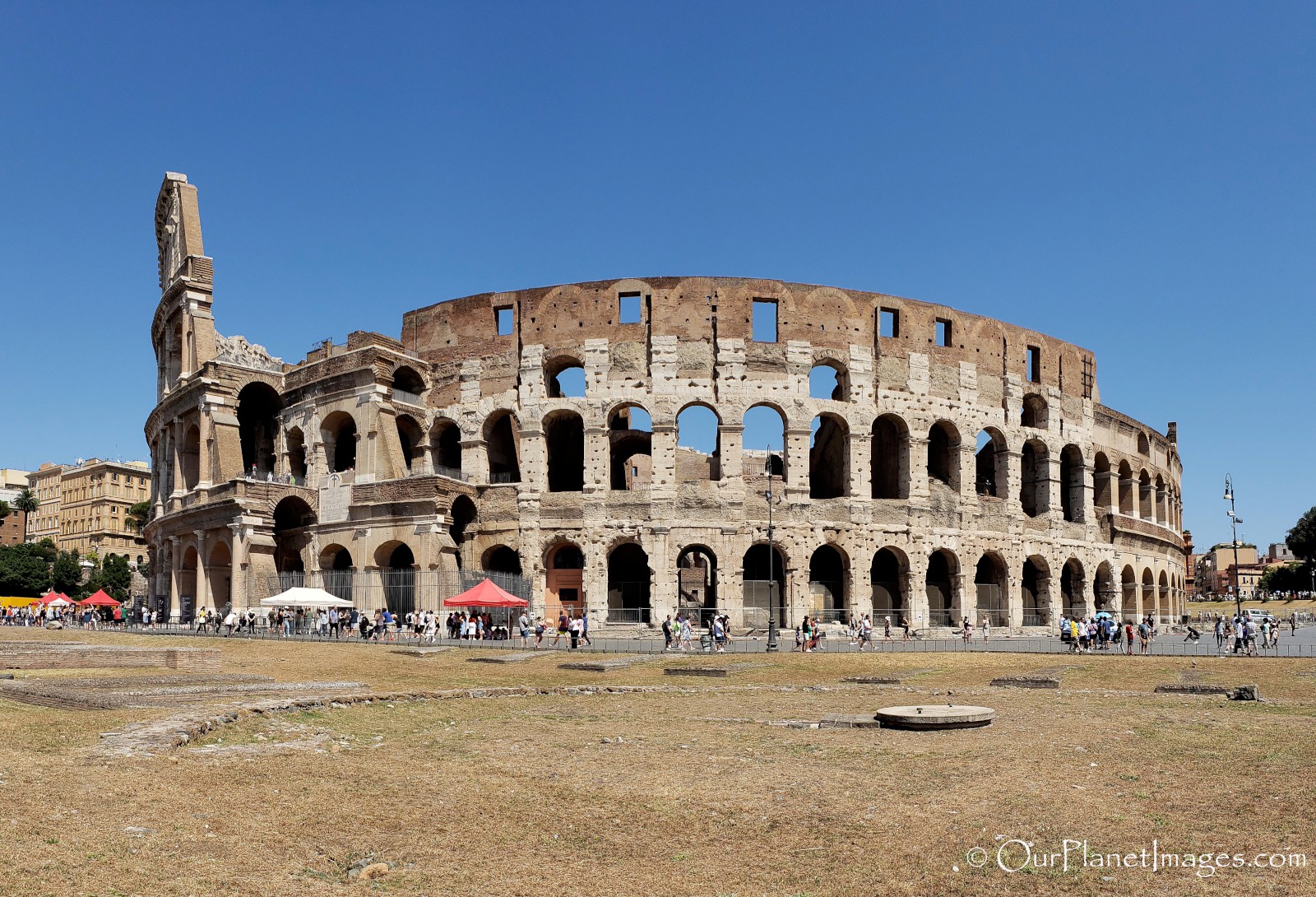
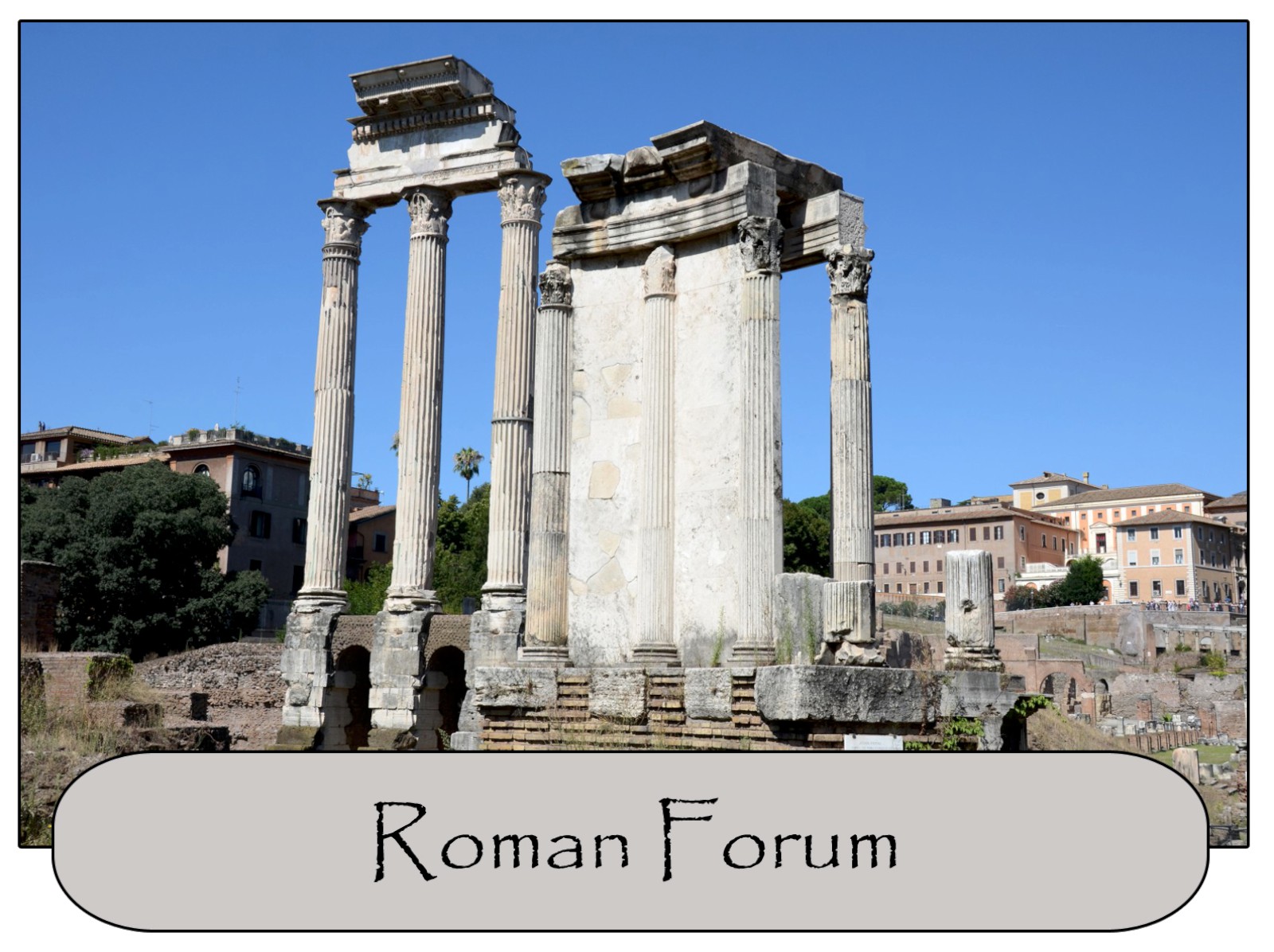
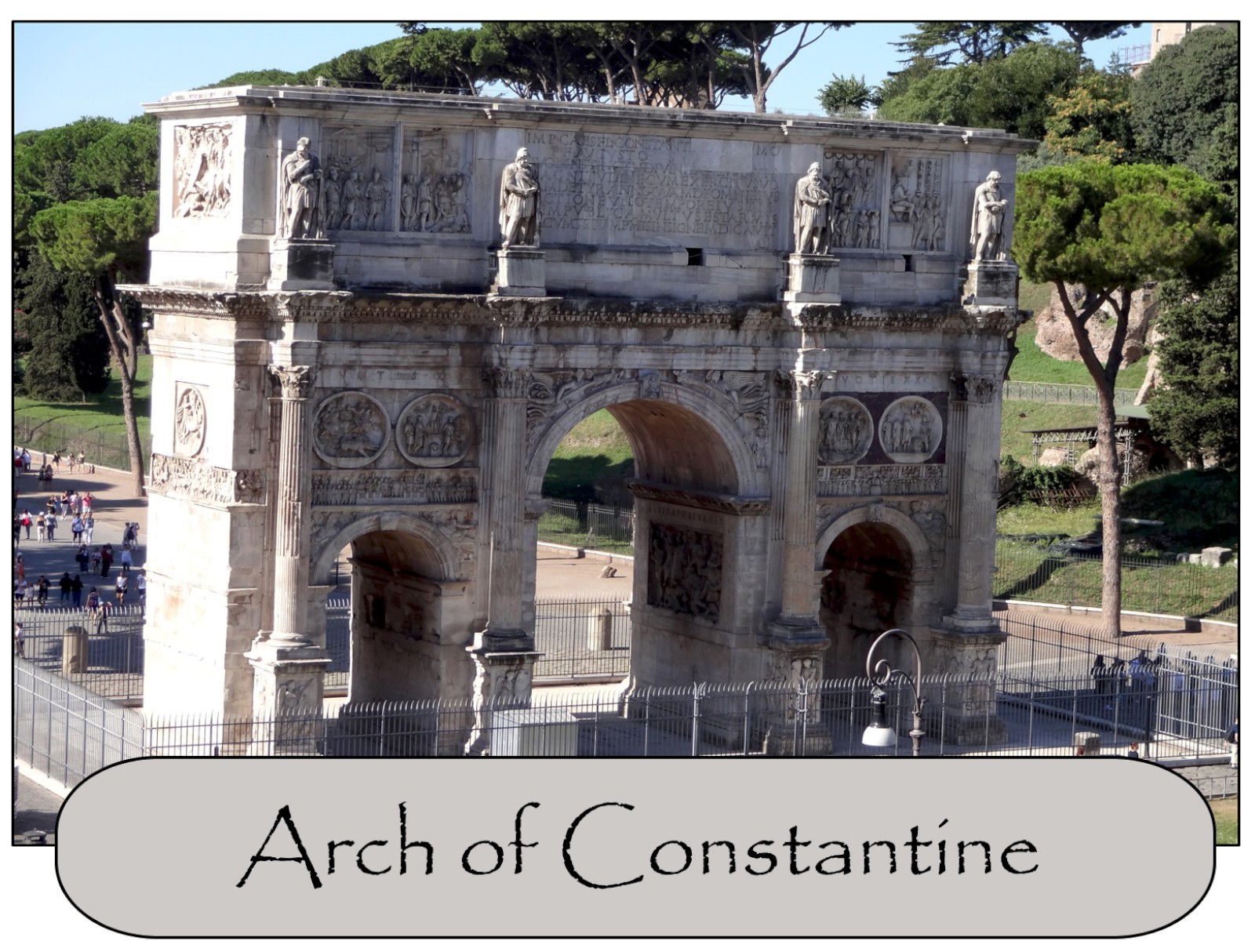
I have visited the Forum and the Colosseum. I am astonished by how capable the Roman engineers were. Of course, the crowds are large during the tourist season. Here is a little hint. Enter the Forum and visit the Forum. Then go to the Colosseum. When I was there, when the ticket for the Forum covered the Colosseum also. I did not have to stand in the long line to enter the Colosseum. I went directly into the Colosseum from the Forum.